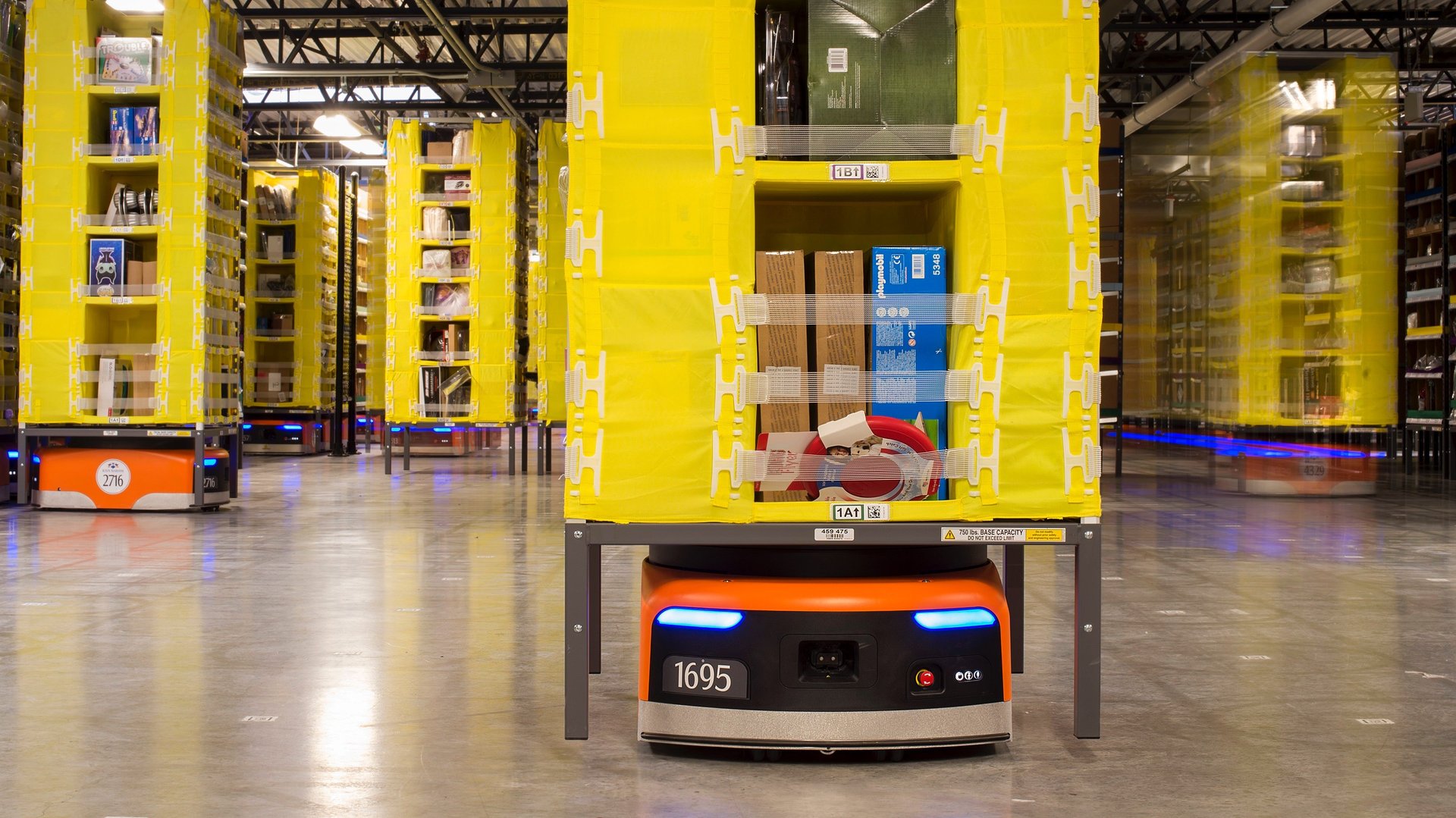Amazon is just beginning to use robots in its warehouses and they’re already making a huge difference
Amazon acquired Kiva for $775 million in 2012 but only started using the orange robots in its warehouses in late 2014. The deal was expected to make inventory management more efficient. It’s now beginning to become clear by how much.


Amazon acquired Kiva for $775 million in 2012 but only started using the orange robots in its warehouses in late 2014. The deal was expected to make inventory management more efficient. It’s now beginning to become clear by how much.
The “click to ship” cycle used to be around 60-75 minutes when employees had manually to sift through the stacks, pick the product, pack it, and ship it. Now, robots handle the same job in 15 minutes, according to a Deutsche Bank note published Tuesday (June 14) based on Amazon’s metrics.
These robots are not only more efficient but they also take up less space than their human counterparts. That means warehouse design can eventually be modified to have more shelf space and less wide aisles. At the end of the third quarter of 2015, Amazon was using 30,000 Kiva robots across 13 warehouses. Each Kiva-equipped warehouse can hold 50% more inventory per square foot than centers without robots. In turn, the company’s operating costs have been sliced by 20%—or almost $22 million—per warehouse.
If Kiva robots are dispatched to the rest of the 110 Amazon warehouses, the tech giant could save almost $2.5 billion, according to Deutsche Bank. However, since it takes $15-$20 million to install robots in each warehouse, the one-time savings is expected to be closer to $800 million. “In our vision for Amazon’s future fulfillment footprint, we see Kiva robots playing a much bigger role in improving efficiency if mega-fulfillment centers are deployed in Asia,” the bank’s analysts wrote.
Amazon has its own grand vision for robots. The company is trying to find ones that can carry out more diverse and advanced tasks. Perhaps ones that can sort and fill orders on their own, deliver those orders, and even understand orders placed by humans. The Deutsche Bank note urges Amazon to switch to self-driving trucks because labor makes up almost 80% of the $4,500 it takes to transport a full trailer of products from the west to the east coast in the US.
Still, warehouse workers don’t need to fret about being replaced quite yet: Amazon is still hiring.